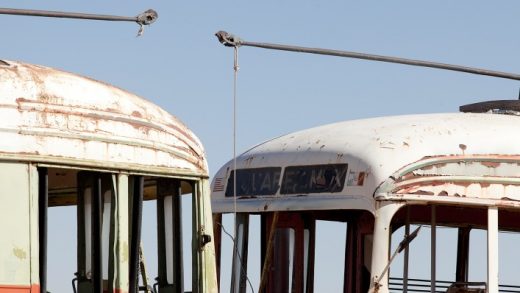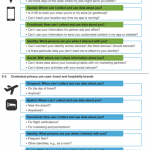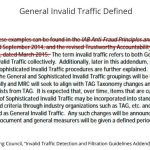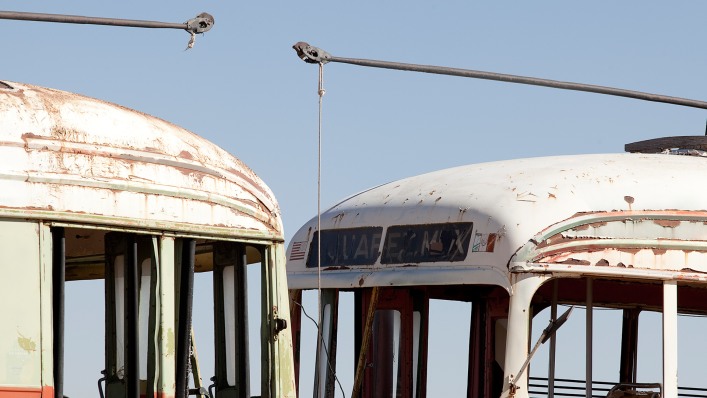A Trolley And A Dream: Texas Border City Aims To Boost Ties With Mexico
El Paso has launched an ambitious project that defies the current political climate: Rather than wall off its south-of-the-border neighbors, it is hoping to one day run routine roundtrip trolley service to nearby Juarez, Mexico.
The dream is not as far-fetched as it may seem: From 1949 to 1974, streetcars made daily jaunts between the two cities. During its heyday, the service averaged more than 600 trips a day. Construction is already well underway for the first leg, which will stay within the confines of El Paso. The second cross-border leg is still in the discussion stage but the momentum is real.
Thousands of “hardworking Mexican national shoppers took their dollars and pesos and spent it in American businesses,” says El Paso City Representative Peter Svarzbein, 36, who grew up in the Southwest Texan city and recalls a time when American-Mexican relations were far more honored and encouraged than today’s news headlines would suggest.
El Paso sits on the border, right alongside Juarez, affectionately referred to as its “sister city,” and the transnational trolley service, the only one of its kind, was key to the economic lifeblood of both. The daily shoppers from Mexico at one point made El Paso’s J.C. Penney the highest-grossing store in the chain.

Svarzbein, one of the major advocates of the streetcars, convinced the Texas Dept. of Transportation to earmark $97 million for phase one, and next year, refurbished vintage streetcars will connect the newly revitalized downtown to the city’s university district. Juarez will have to wait.
A Practical Solution
Inadequate staffing for border patrol screenings at El Paso’s three check points of entry means a lengthy waiting process that can take hours for the 80,000 people who travel between the two cities each day.
“These are people that are shopping, working, and going to school every day,” says Svarzbein, who wants to make it a faster, simpler, less painful process for individuals seeking opportunities. He wants to pivot the conversation away from President Donald Trump’s proposed border wall and what we don’t want—to what we do want.
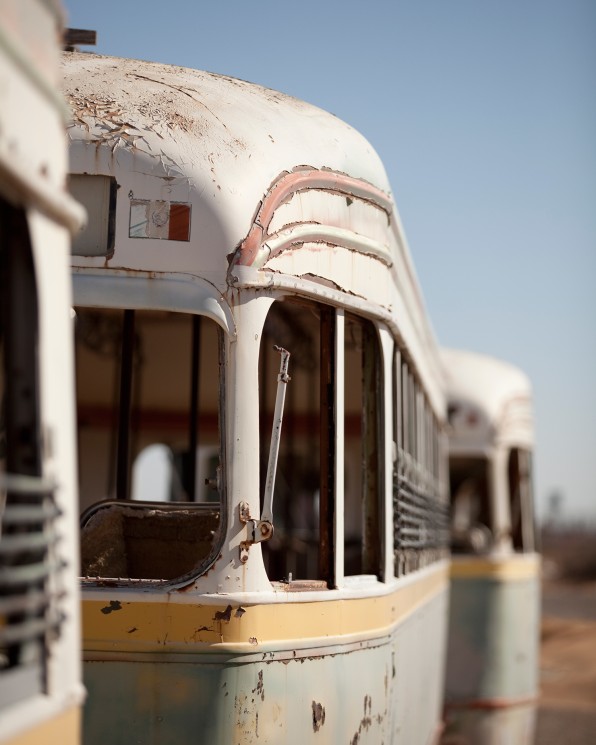
“It’s not enough to be against something; you have to be proactive,” he says. “We can be against [President Trump’s] wall all day, but what are those things that we’re for? What do we communicate that we we want to see here?”
That narrative is emerging all along the border, from McAllen in South Texas to San Diego in California. It’s one that gets lost in the din of the political skirmishes over Trump’s wall and his claim that he’ll get Mexico to pay for it instead of American taxpayers. The story in border city after border city is one of cultural and economic dependency that benefits both sides.
Soon after Trump said in January that he will move ahead with the wall, local officials have stood up to laud ties between the two countries. The mayor of San Diego even held a joint news conference with his Tijuana counterpart.
“We will continue our story of collaboration, our story of friendship, and we will continue working together—together—for the prosperity of our people,” said Kevin Faulconer, a Republican.
And for all the talk of “bad hombres” and fear of drug cartel invasions, San Diego’s crime rate is the lowest it’s been in decades and El Paso was ranked safest city in America four years for municipalities with more than 500,000 people.
Sister Cities
Other superlatives also help tell the El Paso story. The region is a major hub for manufacturing and international trade, the second most important trade point on the border and the 11th largest exporter in the U.S. More than 86% of what is sent out of El Paso heads to Mexico—$24.6 billion worth, according to the International Trade Administration.
“We see the border as an opportunity, not an obstacle or a challenge,” explains Jessica Herrera, interim director for the El Paso Economic and International Development Department.
“You have a constant back and forth [between the two regions],” says Herrera, who welcomes a trolley that would foster more opportunities between the countries. Like Svarzbein, she believes the city should increase its transportation offerings: “Instead of three [entry point] lanes open, we should have five lanes open,” she says.
The mayor of El Paso has already begun reaching out to Juarez to see how the two can further open up transportation, so Svarzbein believes it’s not a matter of if El Paso’s trolleys will stop in Mexico, but when.
-

-
The city of El Paso is refurbishing old streetcars that rolled through Downtown from 1949 to 1974. [Photo: Voogd075 from nl/Wikipedia Commons]
Paper To Reality
The El Paso Streetcar project actually began as a Svarzbein’s graduate art school thesis while he was pursuing a MFA in photo, video, and related media from New York’s School of Visual Arts in 2011.
For the last four decades, the art-deco designed cars were left to die in the desert, on land owned by the El Paso airport.
“I wanted to save them,” explains Svarzbein, who appreciated their place in El Paso’s culture.
After graduating, he returned to his hometown in 2011 and decided to vigorously pursue his “art project.” His passion inspired officials to conduct a feasibility study for an intra-city streetcar line. The trolley idea also captured the imagination of local residents: It had character, added a sense of community, and connected the area to its history.
In 2014, the Texas Department included the $97 million in a $2.1 billion dollar multi-modal transportation plan for the state. The El Paso City Council approved Phase 1 of Svarzbein’s vision—a 4.8 mile route from South El Paso to Downtown to the University of Texas.
Construction is already underway, with the placement of 27 stops. The route will hit the city’s main attractions with shopping centers, the convention center, and downtown ballpark among them.
The trolly project did suffer a financial setback this past fall when it was the victim of a $2.9 million phishing scam. When asked whether it would impact progress, Svarzbein says that the situation has been handled. “My understanding is that the money has been recouped,” he says, “the project is on time and on budget.”
Meanwhile, six historic President’s Conference Committee streetcars are being refurbished for their return to service. The cars will be fitted with modern amenities including air conditioning, bike racks, and Wi-Fi. In a nod to their history, each will be painted in one of three original color schemes from the 1950s, 1960s, and 1970s: mustard yellow, seafoam green, and aqua blue.
Although the trolleys won’t debut until mid-2018, it’s already impacted the local economy by redefining the downtown layout and encouraging new investments. Developers, upon learning of the route, began bidding on vacant buildings to turn into multi-apartment units, hotels, and restaurants. The boutique Indigo Hotel, part of the InterContinental Hotels Group, specifically began construction on one street corner in 2015 because of its proximity to a trolley line stop. Since then, two more hotels sprung up in the same area.
It’s stirring old memories of “the way things used to be,” says Svarzbein. El Paso once was the richest southwestern city, eclipsing Phoenix. The trolleys, he says, are “a symbol of a different time, a time when border crossing was more sophisticated.”
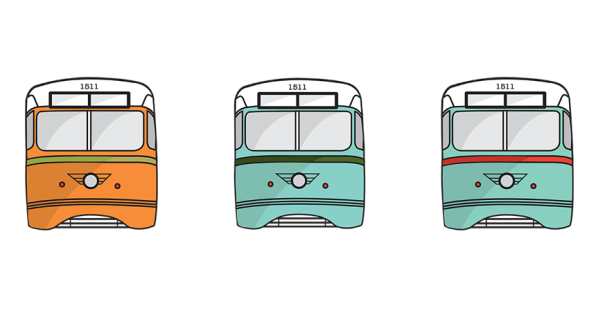
For Phase 2 of Svarzbein’s plan—the Juarez leg—to become reality, it’ll have to cross numerous regulatory hurdles, including local, state, and federal nods.
While El Paso is the only one considering a transnational trolley, other U.S. cities have their own collaborative projects. For example, San Diego in late 2015 unveiled the Cross Border Xpress (CBX) air terminal, an enclosed pedestrian skywalk bridge exclusively for Tijuana Airport passengers who cross the U.S./Mexico border.
Like Svarzbein, CBX COO Elizabeth Brown wanted to make it easier for the 30 million people who cross the area’s borders each year. “There has been a codependency between these two regions for many, many years—decades in fact,” Brown tells Fast Company.
Some are Mexicans that have U.S. citizenship or green card residency or they work in San Diego but live in Tijuana, or the reverse. “There’s definitely a lot of business that goes back and forth,” she stresses. “The state of California has a very robust trade environment with Mexico.”
The 390-foot long structure takes five minutes to cross.
“It’s functionally an airport terminal check-in building that just happens to have a runway in Mexico,” explains Brown. In 2016 alone, the airport saw 6.9 million travelers, with 74% of them crossing the border. “It shows how interconnected we are,” reflects Brown.
As for talk of a wall, Brown doesn’t seem the least bit concerned, seeing that there’s already a border fence in place.
“We don’t expect it to have any effect,” she says, “we don’t expect any changes.”
That nonchalance is also exhibited by Mauricio Ibarra, planning director for the city of Matamoros, Mexico, which along with the city of Brownsville, Texas, is pushing for a binational bike trail. The project aims to connect the sister cities that see 12,000 workers cross each day. “You can’t see one city surviving without the other,” says Ibarra. “Their economies are linked.”
The trail would build upon an existing bridge and therefore doesn’t require a U.S. presidential permit. The cities, divided by the Rio Grande, already have a wall in place. “If [the wall] gets bigger, it’s still within the exiting infrastructure,” says Ibarra. “We’re just creating another solution for regular migration—for people that live in one city and work or study in the other.”
The project, says Ibarra, has been in the works for the last two and half years but is currently making significant inroads at the political level. He says there is support from Brownsville citizens, city commissioners as well as a few U.S. congressmen. The hope is that it will get clearance within the year.
Svarzbein is equally as hopeful for his plan and the rescued streetcars are already waiting for their binational return. In homage to the vehicles’ original design, each will boast both a painted U.S. and Mexican flag.
“It symbolizes values and identity we share,” says Svarzbein in a follow-up email. “We have a border that we prefer and need to cross and which defines us and celebrates the way music, family, food, and economy cross every single day.”
“In the same way jazz defines New Orleans or New York has its skyscrapers, El Paso has Juarez and Juarez has El Paso,” he tells Fast Company. “We value and we celebrate border crossings.”
As President Trump looks to wall off Mexico, El Paso and other cities move to strengthen economic and cultural collaboration.
El Paso has launched an ambitious project that defies the current political climate: Rather than wall off its south-of-the-border neighbors, it is hoping to one day run routine roundtrip trolley service to nearby Juarez, Mexico.
Fast Company , Read Full Story
(90)

